Getting your snowmobile’s track adjusted correctly doesn’t have to be complicated. In this guide, we’ll show you the tools, step-by-step instructions, and troubleshooting tips for all major brands — Polaris, Ski‑Doo/Lynx, Arctic Cat, Yamaha, and more. If you do it right, your snowmobile will run great quickly. Why Track Tension Matters Track tension directly affects […]
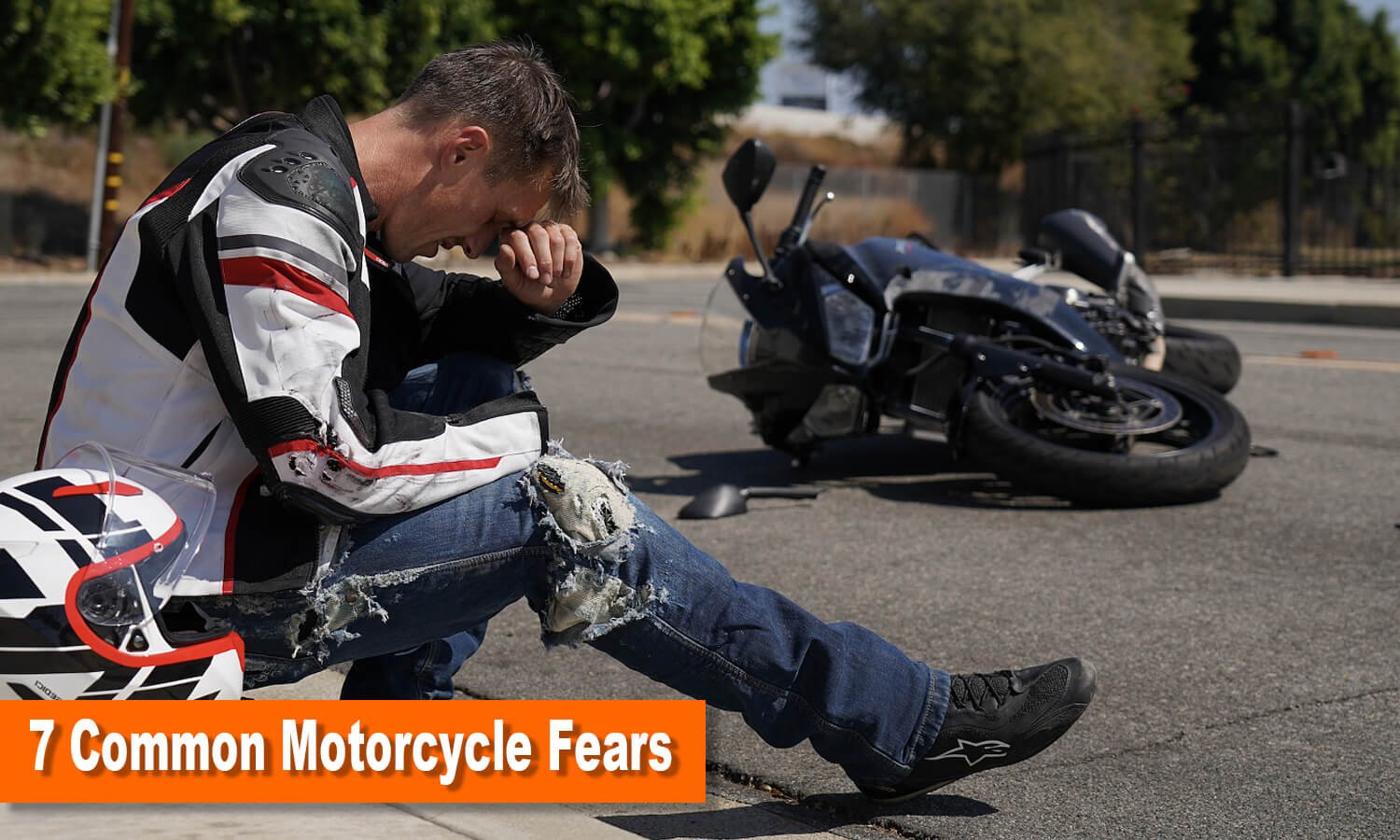
7 Common Motorcycle Fears (And How to Beat Them) in 2025
Motorcycling brings freedom and excitement, but it also comes with its share of fears. Many new and even experienced riders worry about situations that, with the right skills and mindset, are far more manageable than they seem. In this article, we’ll explore seven common motorcycle fears and show you practical ways to overcome them. You’ll learn simple techniques, backed by expert advice, that will boost your confidence on two wheels. Whether you’re a beginner or looking to refine your skills, these tips will help you ride smarter and safer.
Table of Contents
7 Common Motorcycle Fears
1. Riding in Heavy Traffic
Riding in stop‑and‑go traffic can feel overwhelming. Cars change lanes without warning, and you must stay alert to avoid surprises. However, with the right approach, you can navigate congestion safely and calmly.
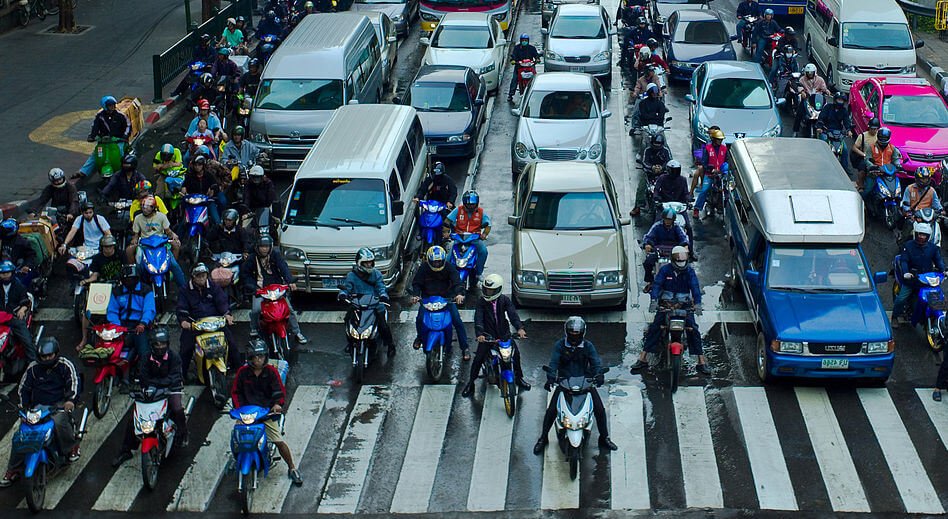
Ride a motorcycle in heavy traffic
Solution:
1. Be cognizant of your lane position.
- Position yourself where drivers can see you best—often slightly left of center in your lane. This gives you room to maneuver and keeps you out of blind spots.
2. Have an escape plan.
- Always scan ahead for gaps or shoulders where you can pull over if needed. Knowing your exit routes reduces panic when traffic suddenly stops.
3. Lane split, filter, and get out (where legal).
- In places where lane splitting is permitted, move forward between lanes at low speed to clear congestion. Always check local laws first and ride at a crawl—never above 10–15 mph when filtering.
By mastering these steps, you’ll ride through heavy traffic with greater ease and safety.
2. Riding at Higher Speeds
Highway riding introduces faster vehicles, stronger wind, and less reaction time. Yet speed itself isn’t the enemy—how you handle it is.
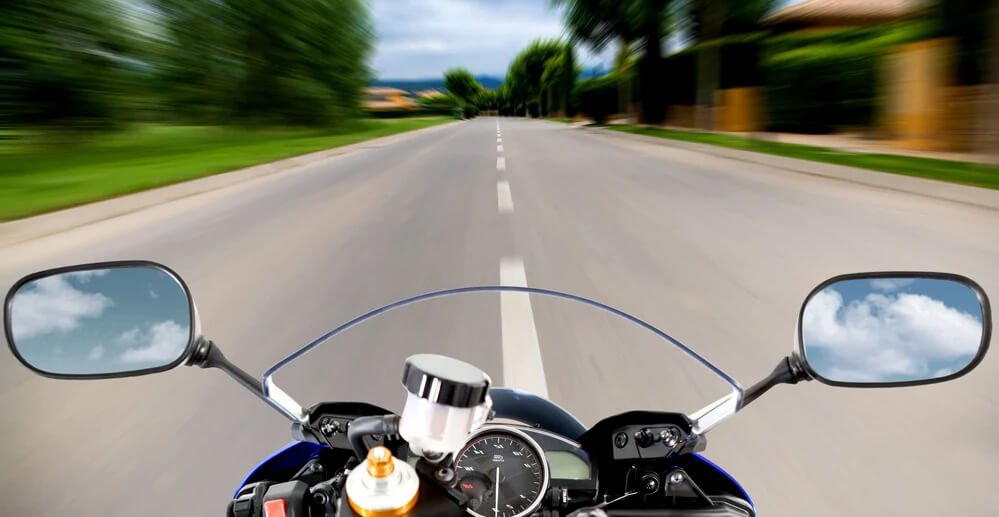
Ride a motorcycle at higher speeds
Solution:
1.“Slow is smooth and smooth is fast.”
- Focus on fluid control inputs. A smooth throttle roll and gentle braking keep the bike stable, allowing you to carry more speed safely.
2. Ease into it on slower roads.
- Practice at moderate speeds before tackling highways. Gradually increase your pace on less busy roads until you feel comfortable.
3. Work up to riding in faster traffic.
- Start by riding alongside slower-moving vehicles, then incrementally join faster lanes as your confidence grows.
4. Maintain ample following distance.
- At speed, give yourself at least a two‑second cushion behind the vehicle ahead. This extra space provides vital stopping room.
5. Mind your entry speed into corners.
- Slow before you lean. Braking mid‑corner can unsettle the bike. Carry a controlled speed into turns and roll on the throttle gently through the apex.
With these practices, highway riding becomes a matter of skill rather than fear.
3. Getting a Flat Tire
A sudden loss of air can rattle any rider’s nerves. But flats are rare if you stay vigilant, and when they happen, you can handle them like a pro.
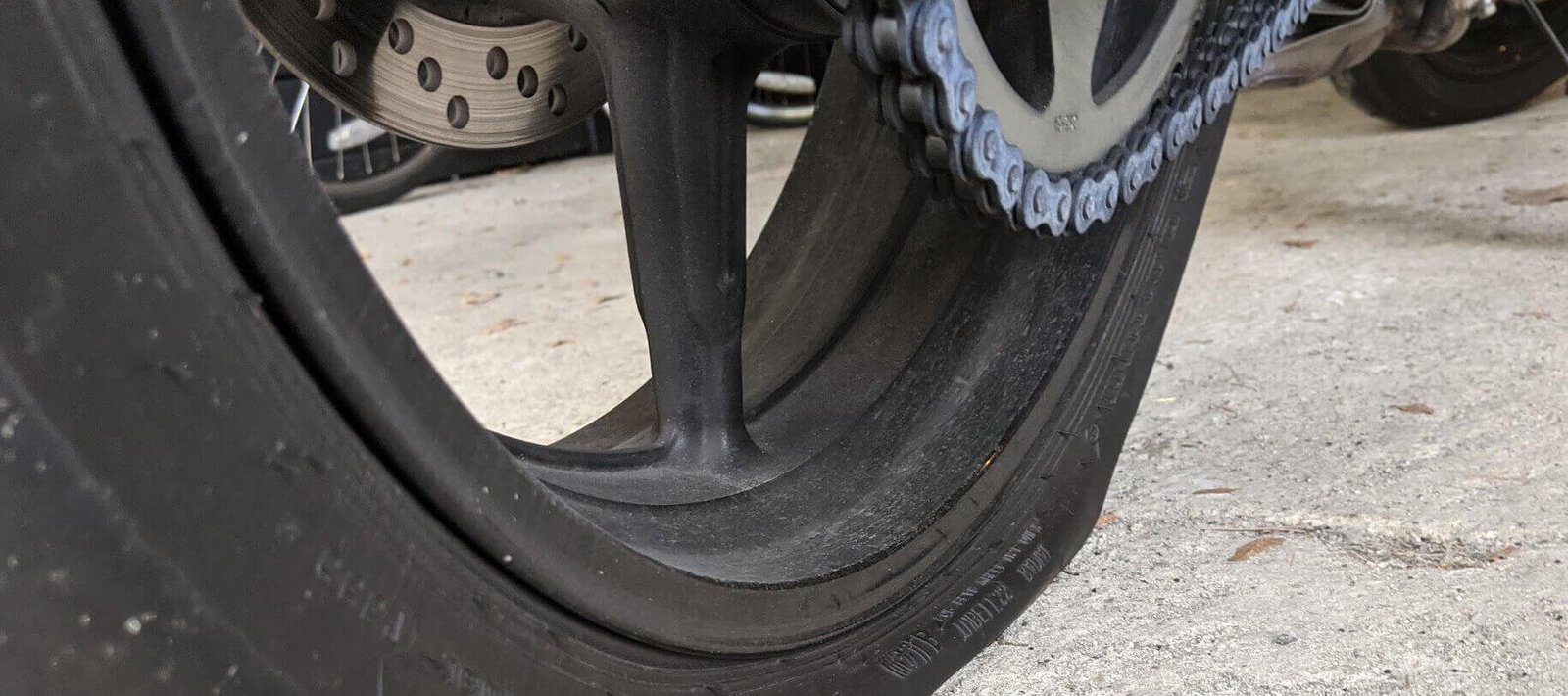
a flat motorcycle tire
Solution:
1. Regularly check tire pressure.
- Use a reliable gauge before every ride. Correct pressure improves handling and reduces the risk of pinch flats.
2. Choose quality tires and replace them when worn.
- Match tires to your riding style and terrain. Replace them when tread depth falls below the legal limit (often 1/32 inch).
3. Carry a puncture repair kit or CO₂ inflator.
- A small plug kit and portable inflator can get you home safely. Practice using them in advance.
4. Know safe pull‑over techniques.
- Slow gradually, signal, and find a flat, stable spot off the road. Turn off the engine and inspect the tire before attempting repairs.
By staying prepared and proactive, a flat tire becomes a minor hiccup instead of a major ordeal.
4. Riding in Bad Weather
Rain, wind, and cold can make riding feel treacherous. In truth, with adjustments, you can maintain control and stay safe.
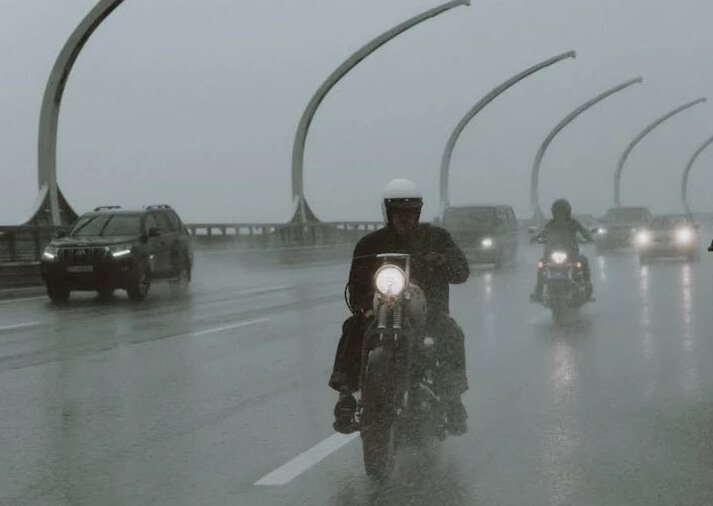
Ride a motorcycle in bad weather
Solution:
1. Minimize lean angle.
- Ride upright and avoid aggressive cornering. Less lean reduces the chance of slipping on wet surfaces.
2. Be smooth on the gas.
- Abrupt throttle changes can break traction. Roll on power gently to maintain grip in slippery conditions.
3. Increase following distance.
- Wet roads double the stopping distances. Add at least one extra second to your normal cushion.
4. Use proper rain gear and an anti‑fog visor.
- Stay dry and maintain a clear vision. Bright, reflective rain suits boost visibility to other drivers.
These steps keep you in control, even when the weather turns against you.
5. Being Invisible to Cars
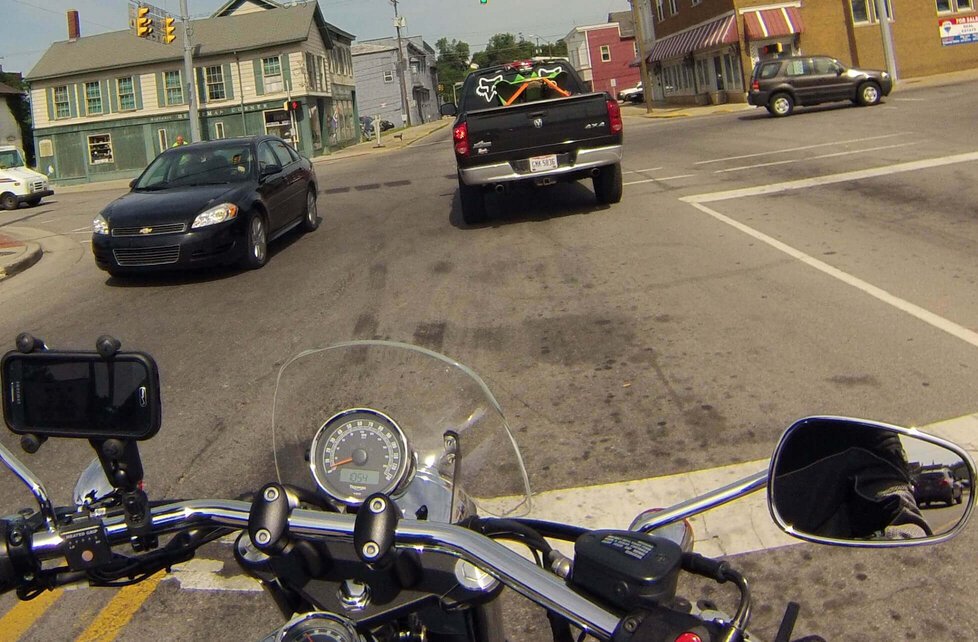
The motorcycle should be invisible to cars
Motorcycles are smaller and often hide in drivers’ blind spots. Staying seen is half the battle.
Solution:
1. Wear reflective gear.
- High‑visibility jackets, helmets, and vests make you stand out in any light.
2. Use functional & quality lighting.
- Upgrade to LED headlights and add auxiliary lights. Flashing daytime running lights draw extra attention.
3. Avoid riding at night when possible.
- Reduced visibility increases risk. If you must ride after dark, slow down and use full lighting.
4. Don’t drink and ride.
- Alcohol impairs perception and reaction time. Staying sober keeps you alert and visible.
5. Wear proper protective gear.
- Bright colors, armor, and a full‑face helmet not only protect you but also make you more noticeable.
Visibility measures are simple yet powerful ways to prevent being overlooked by other road users.
6. Stalling Your Bike
Stalling at intersections or in parking lots can be embarrassing, but it’s a fixable skill.
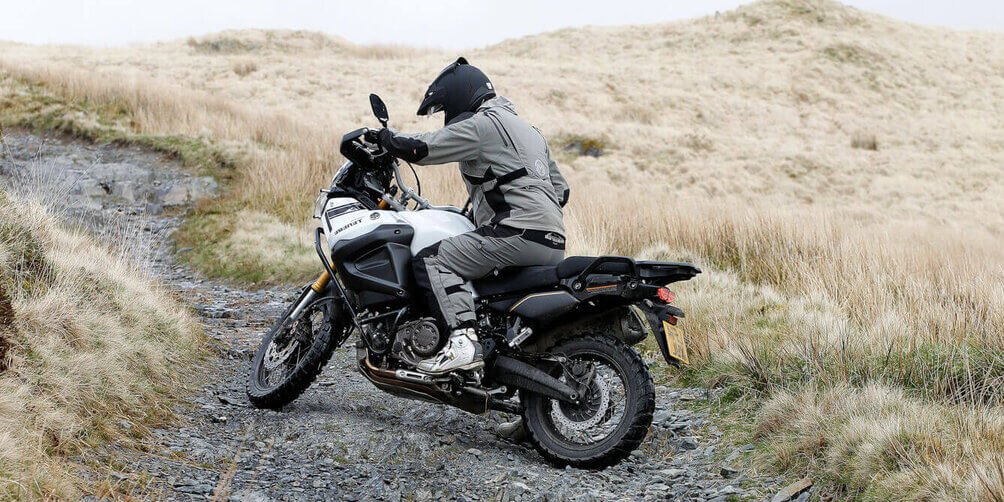
The motorcycle stalls on the road
Solution:
1. Master the friction zone.
- Practice finding the point where the clutch plates start to engage. Feather the clutch there to move smoothly at low speed.
2. Add a bit of throttle.
- Keep the engine around 3,000–4,000 RPM when pulling away. This extra power helps prevent stalls.
3. Keep slow hands.
- Release the clutch and roll on the throttle gradually. Jerky inputs often cause the engine to bog and stall.
4. Practice in a safe area.
- Spend time in an empty lot rocking the bike back and forth to build clutch‑throttle coordination.
With dedicated practice, starting without a hitch becomes second nature.
7. Dropping Your Bike
Fear of dropping your motorcycle at low speed or when stopped can make you tense. Relaxation and technique eliminate most risks.
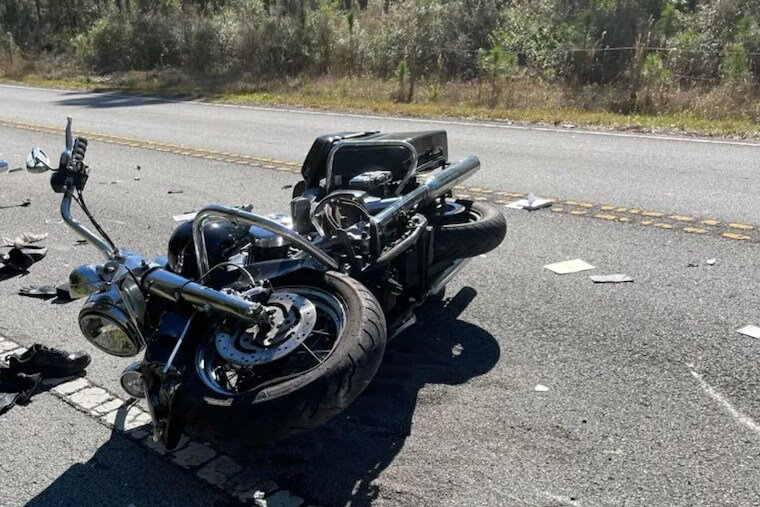
Fear of dropping a motorcycle
Solution:
1. Use the rear brake at slow speeds.
- Front brake grabs can tip the bike over when you’re leaning or turning. The rear brake offers smoother stopping power.
2. Keep handlebars straight when stopping.
- Turning bars while stationary creates an imbalance. Square them up before you come to a halt.
3. Avoid slippery or uneven surfaces.
- Scan where you’ll stop. Gravel, oil, or soft ground under your stand can lead to a drop.
4. Practice slow‑speed maneuvers.
- Cone drills, figure‑eights, and U‑turns in a parking lot build confidence and muscle memory.
By refining these basics, you’ll stop confidently and keep your bike upright.
Communication on the Road
Staying in touch with a passenger or fellow riders boosts safety and enjoyment. A good motorcycle intercom lets you share directions, warnings, or just chat without shouting over wind noise. Look for units with noise‑canceling mics, Bluetooth connectivity, and long battery life.
Conclusion
Every rider faces fears—traffic jams, high speeds, flats, weather, invisibility, stalls, and drops. Yet with the right knowledge and practice, none of these need hold you back. Use these seven strategies to transform worry into skill. Ride smart, stay visible, and keep refining your techniques. Soon, you’ll find that the road’s challenges only add to the thrill of motorcycling.
Happy riding, and keep the shiny side up!

Rodney L is a technical writer and product consultant with over a decade of experience in the motor industry. Rodney is a fan of performance machines that run fast and loud and an expert in all things custom. His numerous articles and write-ups are available at our knowledge base. Whether it’s something wrong with your motorcycle or you are building a custom bike, you can trust Rodney’s experience.
Motorcycle riding is all about the sense of freedom, adventure, and thrill of the open road. But come on—being connected when you ride isn't always an easy thing. Whether you're riding with a buddy, navigating traffic in the city, or long-distance riding, effective communication is crucial. That's where the Fodsports T5 and T6 come in, […]
If you're looking for a new motorcycle intercom system this year, Fodsports has something exciting in store. The company has launched two new Bluetooth helmet intercoms: T1 and T1 Pro. Both models bring upgraded features, sleek design, and high-definition audio quality for riders who want to stay connected, entertained, and safe on the road. But […]
Fodsports T1 and T1 Pro: The Newest Bluetooth Intercoms for Riders. Whether you’re cruising on highways, exploring rugged trails, or commuting daily, clear communication is key. Fodsports is thrilled to launch its latest Bluetooth intercoms: the T1 and T1 Pro. Built for riders who demand reliability, versatility, and crystal-clear sound, these devices redefine how you […]
Many riders who aren't so tall or ladies just starting to ride bikes need to pick out the best Motorcycles for Short Riders and Women. They gotta look for three key things: a seat that's not too high up, a bike that's not too heavy, and something that looks good enough to give them confidence. […]
Fodsports FX 60C vs FX30C Pro: What's new techs are the FX 60C bringing to us? Fodsports is a brand worth-mention for helmet communication and video recording. This brand has established itself as a key player with its innovative Bluetooth camera intercom systems. Recently, Fodsports has released a new camera intercom, the FX 60C. How […]
